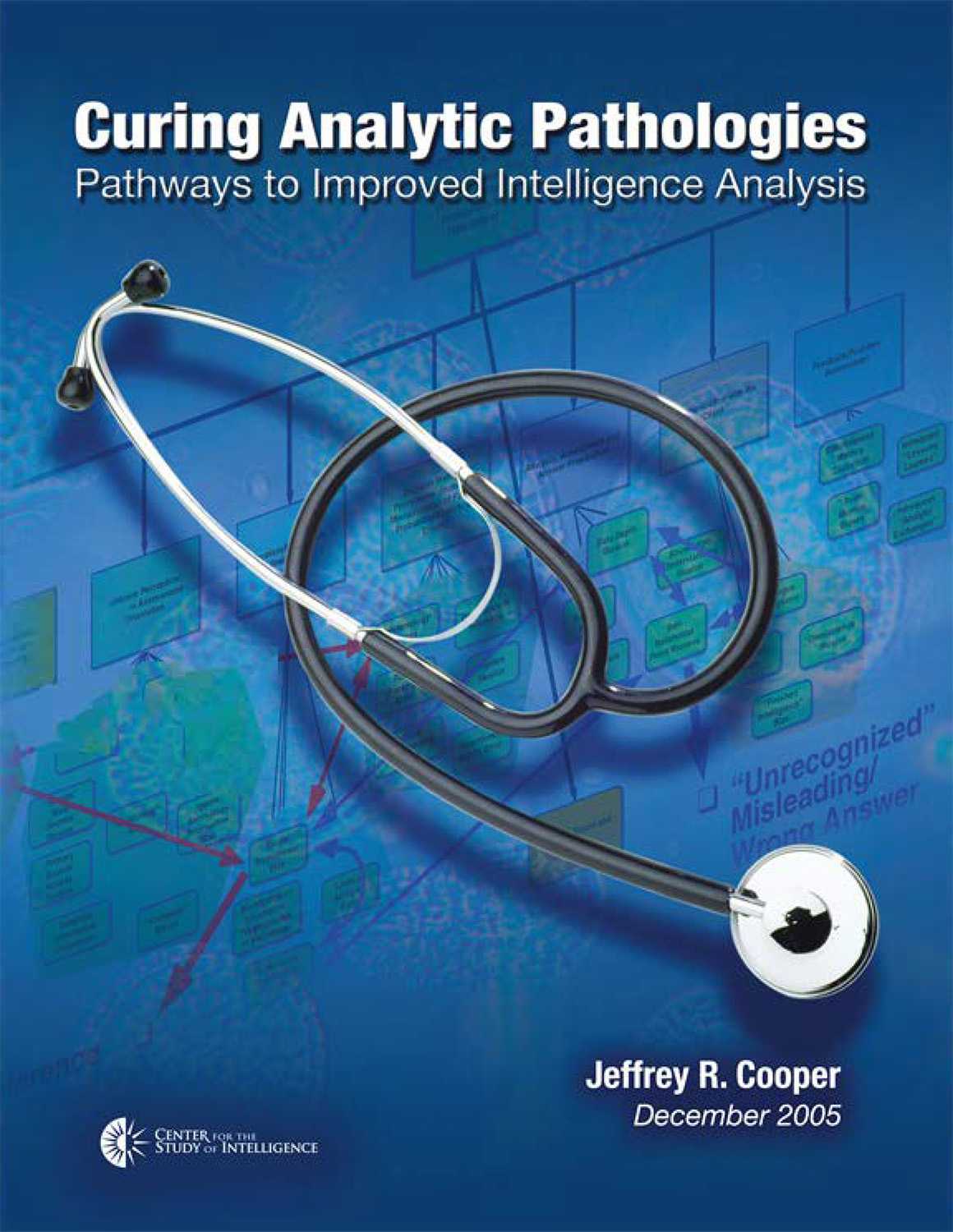By Jeffrey R. Cooper
With a Foreword by former Chairman of the National Intelligence Council, Fritz Ermarth.
From the introduction:
As a result of a number of analytic projects for different intelligence agencies, a major focus of my work during the past several years has involved examining the practice of analysis within the US Intelligence Community.
This study was prompted by a growing conviction—shared by others, to be sure—that improving the analytic products delivered by Intelligence Community components had to begin with a critical and thorough appraisal of the way those products are created. A conversation with a physicist friend in 2002 had triggered thoughts on several basic differences between the practice of science and intelligence analysis. Shortly thereafter, an invitation to give a seminar on intelligence analysis at Stanford University led me to prepare a briefing entitled “Intelligence and Warning: Analytic Pathologies,” which focused on a diagnosis of the problems highlighted by recent intelligence failures.
As Donald Stokes noted in his seminal book on science and technological innovation, Pasteur’s Quadrant, “Pathologies have proved to be both a continuing source of insight into the system’s normal functioning and a motive for extending basic knowledge.”
The Analytic Pathologies framework yields four insights that are crucial both to accurate diagnosis and to developing effective remedies.
- First, the framework enables analysts to identify individual analytic impediments and determine their sources.
- Second, it prompts analysts to detect the systemic pathologies that result from closely-coupled networks and to find the linkages among the individual impediments.
- Third, it demonstrates that each of these networks, and thus each systemic pathology, usually spans multiple levels within the hierarchy of the Intelligence Community.
- Fourth, the framework highlights the need to treat both the systemic pathologies and the individual impediments by focusing effective remedial measures on the right target and at the appropriate level.
